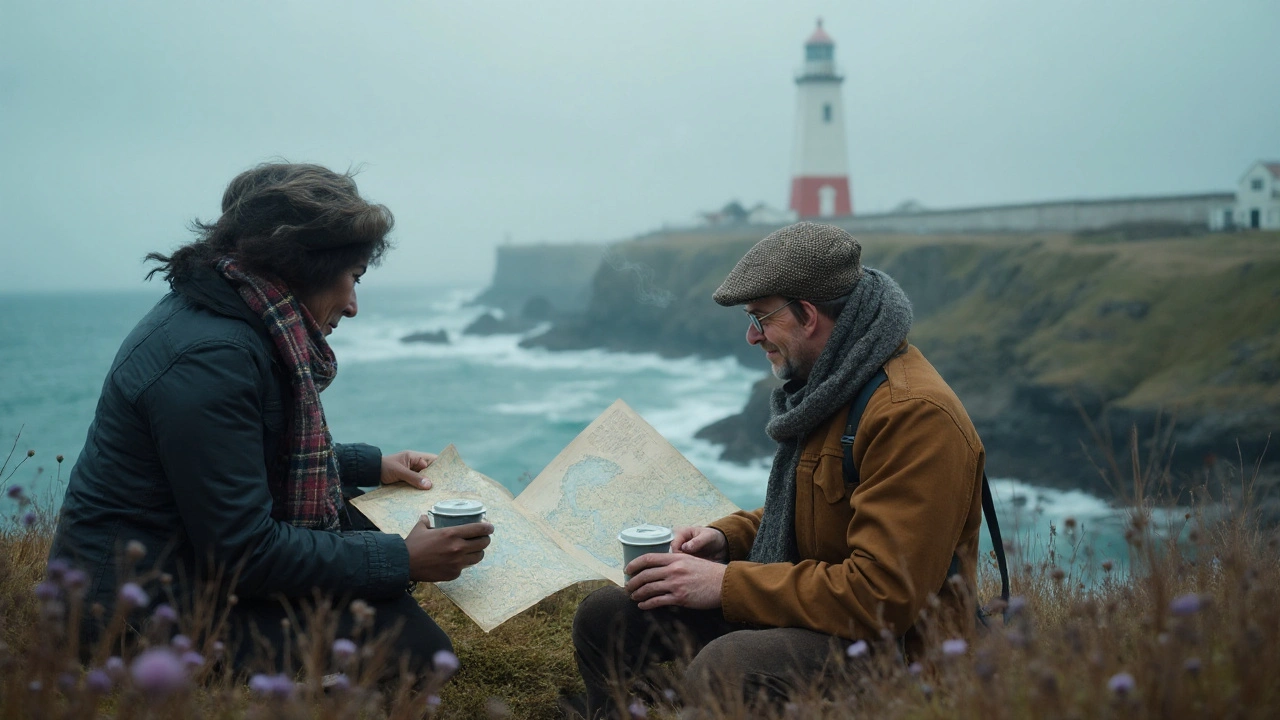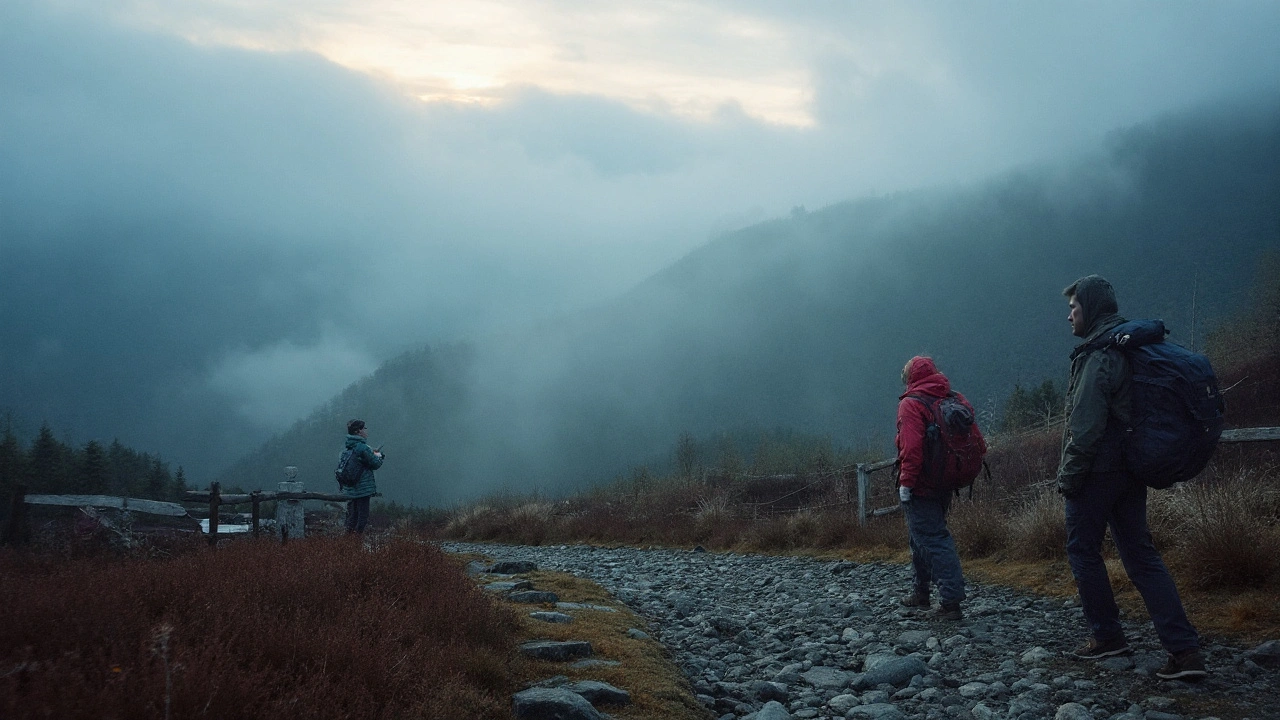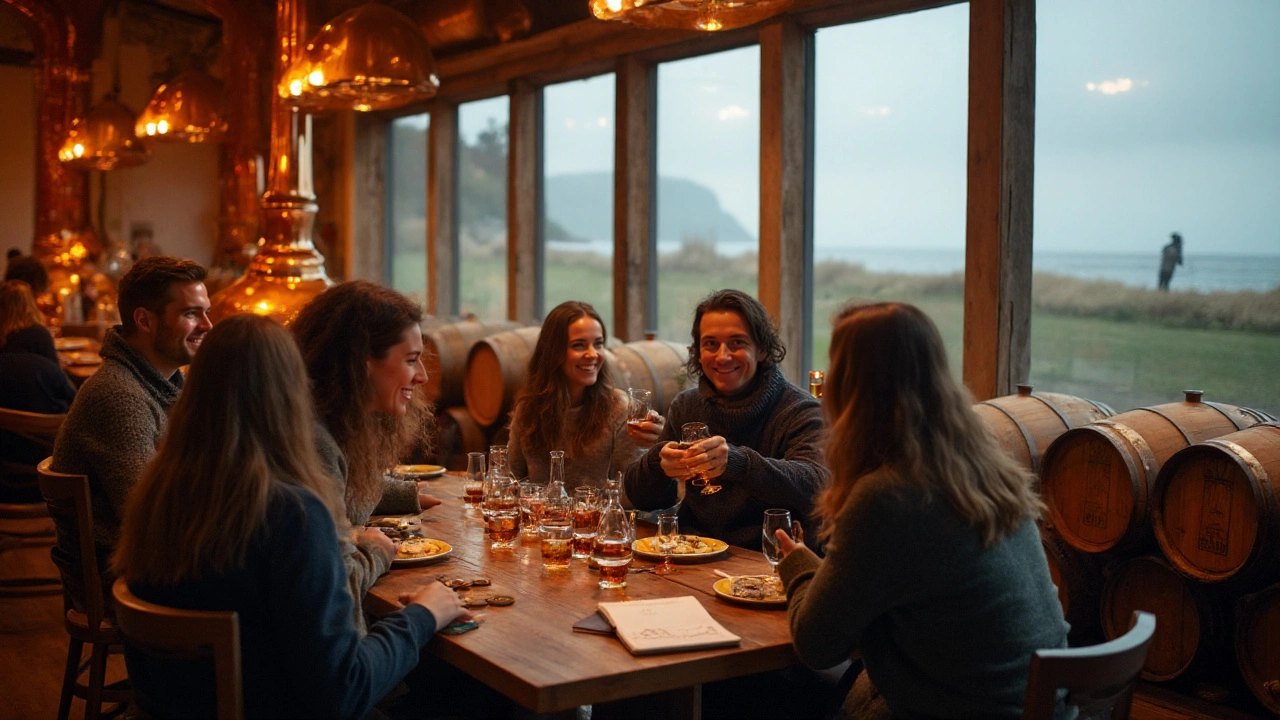
You want the feel of Scotland-moody coasts, rain-polished hills, that raw, clean wind-but you’re staying stateside. Good news: you can get very close. No single US place is a perfect match, but some regions nail the look, the weather, and the vibe. I’ll show you where, when to go, and what each area does best. Expect trade-offs: some places have the climate, others win on rugged scenery, a few deliver both. If you just want the quick answer, here are the top US places like Scotland and how to pick the right one for your trip.
- Top pick for landscape + climate together: Pacific Northwest coast (Washington’s Olympic Peninsula and the Oregon Coast).
- Best rugged coastal analog with lighthouses: Maine’s coast and Acadia National Park.
- Best Highlands look without the sea: Montana’s Glacier National Park and the Northern Rockies.
- Closest climate match and wild fjords: Southeast Alaska (Juneau/Sitka area), if you don’t mind remote travel.
- Best lake-and-cliff coast: Lake Superior’s North Shore (Minnesota + Michigan’s Upper Peninsula).
- Best city vibe: Seattle and Portland for rainy, green, bookish energy; Boston for granite, history, and pubs.
- Golf links analog: Bandon Dunes (Oregon). Whisky analogs: Westland (Seattle), McCarthy’s and Westward (Oregon).
Best US regions that feel like Scotland (ranked)
1) Pacific Northwest coast (Washington’s Olympic Peninsula + Oregon Coast)
If you want the Highlands-and-Hebrides mood without leaving the US, start here. The Olympic Peninsula throws sea stacks, headlands, and constant mist at you. It’s green year-round, studded with Sitka spruce and moss-very familiar if you’re used to Scotland’s west coast. Drive the loop, walk Rialto or Ruby Beach, listen to the surf, then duck into old-growth at the Hoh or Quinault. Oregon adds dramatic capes (Ecola, Cape Perpetua) and long, empty beaches. Weather-wise, this is the US region that actually feels wet, mild, and maritime, especially outside summer.
- Why it matches: Cool, cloudy, windy coasts; mountains close to the sea; persistent drizzle outside summer; small harbor towns; ferry culture (Puget Sound).
- Where it differs: Summers are drier than Scotland; peaks are higher and snowier; trees are bigger (temperate rainforest).
- Extras for Scotland fans: Links-style golf at Bandon Dunes; American single malt at Westland (Seattle) and Westward/McCarthy’s (Oregon); ferry-hopping the San Juan Islands for an island-hopping vibe.
- Best time: March-May and September-October for that moody, green feel with fewer crowds. Winter for storm watching.
2) Maine coast + New England mountains (Acadia, Camden Hills, White/Green Mountains)
Maine is “granite into the sea” with lighthouses, fog horns, and spruce. Acadia’s pink granite domes and rocky coves feel like parts of Argyll on a bigger scale. Towns such as Bar Harbor, Camden, and Rockport mix fishing culture with artsy cafés, like a New England take on Tobermory. Head inland to New Hampshire’s White Mountains (Mt. Washington) or Vermont’s Green Mountains for rounded summits, stone walls, and cool, cloudy days in shoulder seasons.
- Why it matches: Craggy coast, cold water, fog; granite, moor-ish feel on bald summits; tight-knit coastal towns; deep fall color (not Scottish, but the atmosphere fits).
- Where it differs: Winters are harsher; summers can be warmer inland; more maple and birch, fewer heather slopes.
- Extras: New Hampshire Highland Games at Loon Mountain; easy lighthouse-hopping; classic seafood shacks that echo the simple, hearty vibe of coastal Scotland.
- Best time: May-June (cool, fewer bugs by late June) and September-October (fog, crisp air, peak color).
3) Lake Superior’s North Shore (Minnesota + Michigan’s Upper Peninsula)
Stand on a cliff above Superior in a northeast blow and you’ll swear you’re staring at the North Atlantic. Split Rock Lighthouse, basalt cliffs, and long pebble beaches bring the drama. The Superior Hiking Trail gives you ridge walks with endless water views that read as “sea,” not “lake.” Towns like Grand Marais keep things low-key, creative, and outdoorsy.
- Why it matches: Harsh water, moody skies, lighthouses, boreal forest, rugged headlands.
- Where it differs: It’s freshwater; winters are brutal; big lake-effect storms.
- Extras: Isle Royale National Park for serious wilderness-island energy; thundering waterfalls in spring; saunas and Finnish heritage rather than Scottish, but the stark beauty lines up.
- Best time: Late May-June (waterfalls, cooler) and September (bug-light, stormy days start returning).
4) Northern Rockies (Glacier NP, Montana + parts of Idaho and Wyoming)
For that Highlands skyline-glens, corries, knife-edge ridges-Glacier is the US showpiece. Carved rock, hanging valleys, and blue lakes look like the Northwest Highlands after a gym membership. The color palette even matches on a cloudy day. You’ll miss the sea, but you gain wildlife: mountain goats, bears, and bighorn sheep. Note: summers are sunnier and drier than Scotland, and thunderstorms can pop up fast.
- Why it matches: Serious glacial scenery; misty mornings; alpine meadows and cold lochs (lakes).
- Where it differs: Bigger relief; hotter in sun; fire risk late summer; crowds on marquee roads.
- Extras: Backcountry huts? Not quite, but you’ll find rustic lodges and historic chalets; American single malt isn’t central here-think craft beer towns like Whitefish and Kalispell.
- Best time: Late June-early July (snow still on peaks), or September (quieter, smoke risk drops after rain).
5) Southeast Alaska (Inside Passage: Juneau, Sitka)
If you care most about climate and rugged coasts, this is shockingly close: cool, wet, windy, and green. Fjords, whales, tidewater glaciers, and cedar-spruce forests build a scale that tilts more Norway than Scotland, but the day-to-day weather-low cloud, rain bands, bright breaks-feels familiar. Access is by plane or ferry, which adds cost and time.
- Why it matches: Marine west coast climate, island chains, ferry culture, constant mist, dramatic coastal mountains.
- Where it differs: Bigger terrain and glaciers; distinct Tlingit, Haida, and Tsimshian cultures.
- Extras: Brown bears, humpbacks, and tidewater ice; photography heaven in any weather.
- Best time: May-June for longer dry spells; August for moody rain and green on full blast.
6) Appalachian Highlands (Blue Ridge, Smokies, West Virginia)
Picture endless blue layers, low cloud, and fiddle tunes rolling out of a porch. The cultural thread here runs Scots-Irish, with Highland Games, ballads, and a love for story and song. On misty days on the Blue Ridge Parkway, it feels very Highland-just swap heather for rhododendron and oak.
- Why it matches: Rolling uplands, foggy ridges, Celtic festivals, fiddle tunes, stone fences in places.
- Where it differs: Warmer and more humid; biodiverse forests instead of open moor; thunderstorms.
- Extras: Grandfather Mountain Highland Games (NC), one of the biggest in the US; waterfalls in Pisgah and Monongahela.
- Best time: April-May and late September-October for cool, clear days and soft light.
7) Northern California coast (Mendocino, Humboldt)
Wind-lashed headlands, sea arches, and lonely lighthouses echo chunks of the Moray or Caithness coastline. Fog is common in summer, and winter storms pound the cliffs. Redwoods change the feel-cathedral forests instead of open hills-so it’s not a perfect match, but the drama hits right.
- Why it matches: Stormy coast, wind-shaped trees, cool fog, small fishing towns.
- Where it differs: Drier climate pattern; giant redwoods; more sunshine breaks.
- Extras: Wine and oysters, scenic Highway 1 pullouts, off-season calm.
- Best time: November-March for wild weather; May-June for clifftop hikes in cool air.

How to choose your match: climate, terrain, culture, costs
Before you pick, lock your priorities. Scotland is a mix of weather, coast, mountains, culture, and scale. You won’t get all five in one US spot, so choose your top two.
- Rule of thumb: If you want damp, green, and windy, go West Coast north of San Francisco. If you want granite coasts and lighthouses with cool air, go Maine. If you want Highland-style mountains, go Glacier and the Northern Rockies.
- Links golf? Oregon coast. Peaty vibes in a glass? Pacific Northwest single malts. Island-hopping? San Juans or Southeast Alaska ferries.
- Hate heat? Avoid inland US in midsummer; hug the coasts or go high elevation.
Climate notes: NOAA’s 1991-2020 climate normals show the Pacific Northwest coast staying mild (winter lows mostly 35-40°F, summer highs 60s-70s°F) with significant cool-season rain. Maine’s coast is cooler than inland New England but still sees winter freezes and warm summer days. Scotland (UK Met Office, 1991-2020) runs cooler year-round, with the wettest west coast spots often topping 100 inches of annual rain, while eastern lowlands stay much drier.
| Region (anchor spot) | Annual precip | July avg high | Jan avg low | Coast? | High point nearby | Notes (2025 travel) |
|---|---|---|---|---|---|---|
| Olympic Peninsula, WA (Forks/La Push) | 100-140 in (NOAA) | 65-70°F | 34-38°F | Yes | Mt. Olympus 7,980 ft | Ferries, rainforests, storm watching; summer drier than Scotland |
| Oregon Coast (Cannon Beach-Bandon) | 60-90 in (NOAA) | 60-68°F | 40-45°F | Yes | Coast Range 3-4k ft | Links golf at Bandon Dunes; dramatic capes; fog common |
| Maine Coast (Acadia NP) | 45-60 in (NOAA) | 75-79°F | 10-20°F | Yes | Mt. Katahdin 5,268 ft | Lighthouses, granite domes; cold water, fall color |
| Lake Superior North Shore (MN/MI) | 28-35 in (NOAA) | 70-75°F | 0-10°F | Freshwater “sea” | Ridges 1-2k ft | Stormy seas feel Atlantic; winters severe |
| Glacier NP, MT | 25-40 in (NOAA) | 70-80°F | 5-15°F | No | Peaks 8-10k ft | Highlands look; drier, sunnier; permits in peak season |
| Southeast Alaska (Juneau) | 60-90 in (NOAA) | 60-65°F | 25-30°F | Yes | Coastal ranges 3-6k ft+ | Ferries/planes only; fjords, whales; very wet |
| Scotland reference (Inverness/West Highlands) | 25-120 in (UK Met Office) | 62-66°F | 28-34°F | Yes (coast nearby) | Ben Nevis 4,413 ft | Milder summers; persistent wind; shorter mountains |
Costs and logistics (2025): Expect coastal lodging in the Pacific Northwest and Maine to run roughly $200-$350 per night in high season, with Southeast Alaska commonly $260-$400 due to access. National park gateway towns in Montana often land in the $180-$300 range. Links golf at Bandon Dunes typically runs several hundred dollars per round in peak season. These are broad ranges based on current public rack rates and major booking engines; book early and watch shoulder seasons for deals.
Culture analogs:
- Whisky: Pacific Northwest is the US hub for single malt-Westland (Seattle), Westward and McCarthy’s (Oregon), Copperworks (Seattle). Many use local barley; some use peated malt or unique oak (e.g., Garry oak).
- Music and festivals: Look for Highland Games at Grandfather Mountain (NC), Pleasanton (CA), and Loon Mountain (NH).
- Golf: True links-style layouts at Bandon Dunes (OR) and Chambers Bay (WA); Midwest classics like Whistling Straits (WI) give a strong coastal-links feel too.
Pitfalls to avoid:
- Wildfire smoke (West) late July-September; hedge with coastal stays or earlier trips.
- Black flies (Maine/Upper Midwest) in late spring; midges are a Scotland problem, but the US equivalent here bites harder-bring a head net or go in September.
- National park permits (Glacier, sometimes timed entry); reserve as soon as windows open.
- Ferry bottlenecks (San Juans, Southeast Alaska): reserve cars and cabins early.
- Storm seasons: Nor’easters can rattle New England shoulder seasons; West Coast winter storms close trails and roads-check advisories.
Quick decision helper:
- If you want wild coast + rain + moss: Olympic Peninsula, WA.
- If you want cliffy coast + lighthouses + fog: Maine (Acadia).
- If you want Highland peaks + blue lochs: Glacier, MT.
- If you want ferry-hopping islands: San Juan Islands (WA) or Southeast Alaska.
- If you want stormy “sea” without ocean: Lake Superior North Shore.
- If you want links golf + dunes: Bandon Dunes, OR.
- If you want whisky tours: Seattle + Portland metro distilleries.

Plan your trip: itineraries, packing, and FAQs
Three fast itineraries (5 days each)
PNW Coast + Olympics (5 days)
- Seattle to Port Angeles: Ferry across Puget Sound, sunset at Hurricane Ridge if clear.
- La Push/Rialto Beach: Tidepooling, sea stacks; short rainforest walk (Hoh Hall of Mosses).
- Kalaloch to Lake Quinault: Big trees, waterfall loops; storm watching in season.
- Aberdeen to Cannon Beach (OR): Ecola headlands walk, Tillamook Head.
- Oregon Coast southbound: Cape Kiwanda or Cape Perpetua; end in Newport or Bandon (golfers: play late afternoon).
Maine Coast + Acadia (5 days)
- Portland: Lighthouse crawl (Portland Head Light), seafood shack lunch.
- Camden/Rockport: Camden Hills hike (Mt. Battie) for harbor views.
- Acadia NP: Park Loop Road, Ocean Path, sunset from Cadillac Mountain (reserve if required).
- Acadia: Jordan Pond loop, carriage roads cycling; foggy morning photography.
- Schoodic Peninsula: Quieter granite coast, head back via Belfast for small-town charm.
Glacier National Park (5 days)
- West Glacier: Lake McDonald, Apgar sunset; check any timed-entry permits.
- Going-to-the-Sun Road: Logan Pass hikes (Hidden Lake or Highline if open).
- Many Glacier: Grinnell Glacier or Iceberg Lake; wildlife at dusk.
- Two Medicine: Quieter classic hikes, boat ride if running.
- Whitefish/Kalispell: Recovery day-cafés, bike paths, river stroll.
Packing checklist (works for all these regions)
- Waterproof-breathable shell with a real hood; packable down or synthetic midlayer.
- Quick-dry base layers, merino socks; sturdy waterproof boots or trail shoes.
- Warm hat and gloves even in summer for coastlines and high passes.
- Head net + repellent for Maine/Upper Midwest late spring; sunscreen for high-elevation Rockies.
- Binoculars for wildlife and seabirds; dry bags for camera/phone on stormy coasts.
- Paper map backup in national parks; portable battery; refillable water bottle and thermos.
Safety and logistics
- Check NOAA point forecasts for specific trailheads and coastal headlands (conditions change fast).
- Watch tide charts on West Coast beaches; sneaker waves are real.
- Carry bear spray in Glacier and know how to use it; store food properly.
- In shoulder season, some park roads close; always check park alerts before you go.
Mini-FAQ
- Which single US place is most like Scotland? The Olympic Peninsula wins for year-round vibe: rain, green, surf, and mountains in one loop.
- Best US city analog to Edinburgh? Seattle for hills, water, and weather; Boston for stone, history, and pubs. Neither has a castle on a volcanic plug, but the feel overlaps.
- Where can I get “island Scotland” vibes? San Juan Islands (WA) for ferry-hopping and pastoral fields; Isle Royale (MI) for raw remoteness; Southeast Alaska for wild fjords.
- Is there US heather? Heather exists in a few gardens and dunes in the PNW, but you’ll mostly see alpine wildflowers and heath-like shrubs. Don’t expect purple moors.
- Links golf without a passport? Bandon Dunes (OR) is your top call; Chambers Bay (WA) and Whistling Straits (WI) scratch the itch too.
- Whisky like Scotch in the US? Look for American single malts in the Pacific Northwest. Westland and McCarthy’s lean smoky in limited releases; Westward focuses on malt character.
- When to go for classic grey skies? Spring and autumn. West Coast: March-May and Sep-Nov. Maine: May-June and Sep-Oct. Glacier: September (watch for early snow).
Pro tips
- Photography: Cloudy days make colors pop; shoot after rain for saturated greens.
- Crowds: Aim for dawn starts; in Acadia and Glacier, sunrise hikes buy you hours of quiet.
- Food: Coastal chowder and smoked fish scratch that simple, hearty Scottish-food itch; in PNW, add salmon and Dungeness crab.
- Transport: Build buffer time for ferries and mountain passes; weather wins arguments.
Why you can trust these matches: The comparisons lean on NOAA 1991-2020 climate normals, UK Met Office norms for Scotland, and on-the-ground patterns-storm seasons, fog cycles, and trail access windows shared by the National Park Service. Lodging and tee-time costs reflect 2025 public rates and common booking data. If your priority is the daily feel-cloud, wind, water-the Pacific Northwest and Southeast Alaska are the tightest fit. If it’s the shape of the land-glens and corries-Glacier competes hard. For lighthouses and salt on your lips, Maine hits the spot.
If I had to give you one “book-it-now” answer, go West: do the Olympic Peninsula and an Oregon Coast swing. You’ll get the rain-polished green, the surf, the cliffs, and mountains in your windshield by lunch. Pack the shell, embrace the mist, and you’ll feel right at home.
